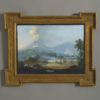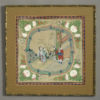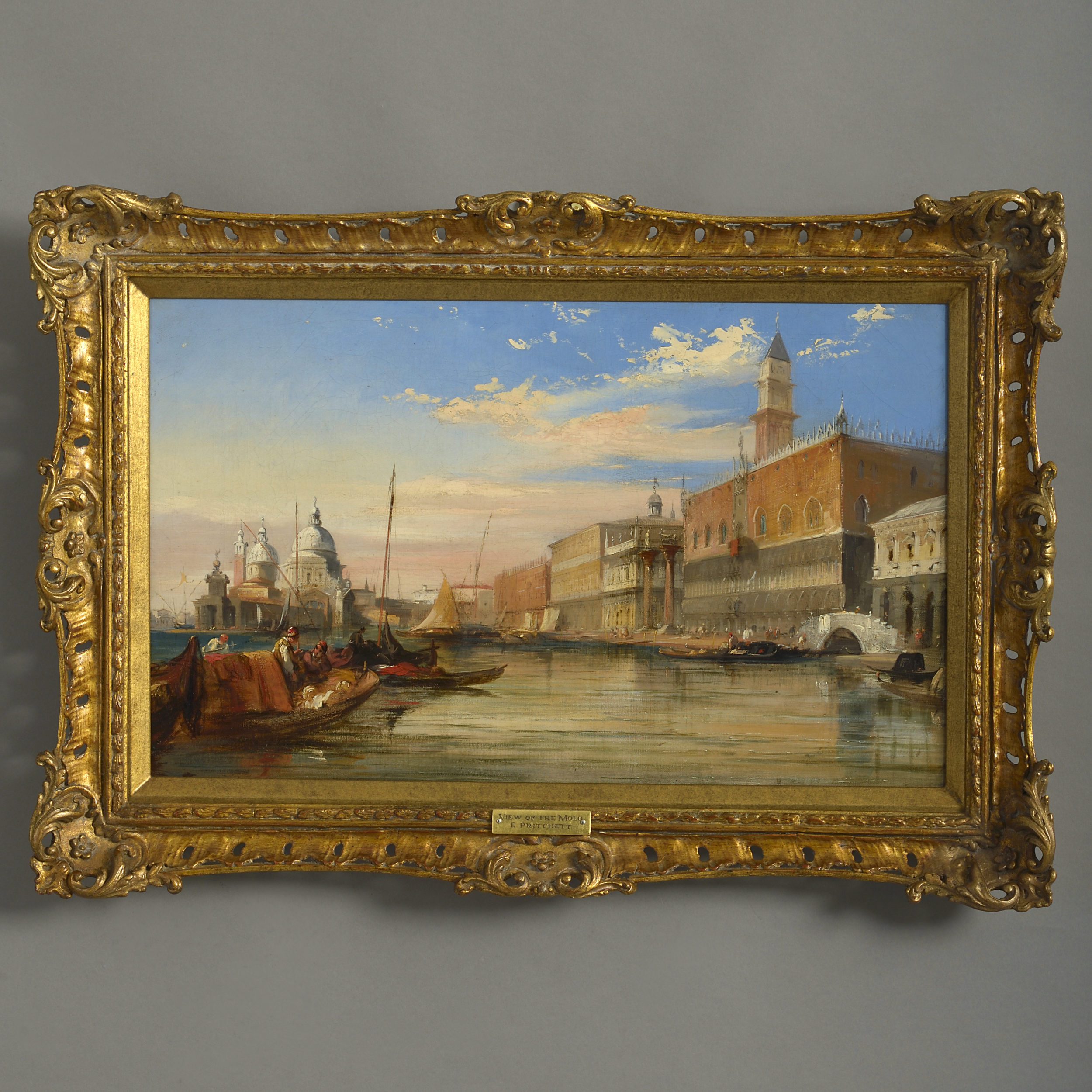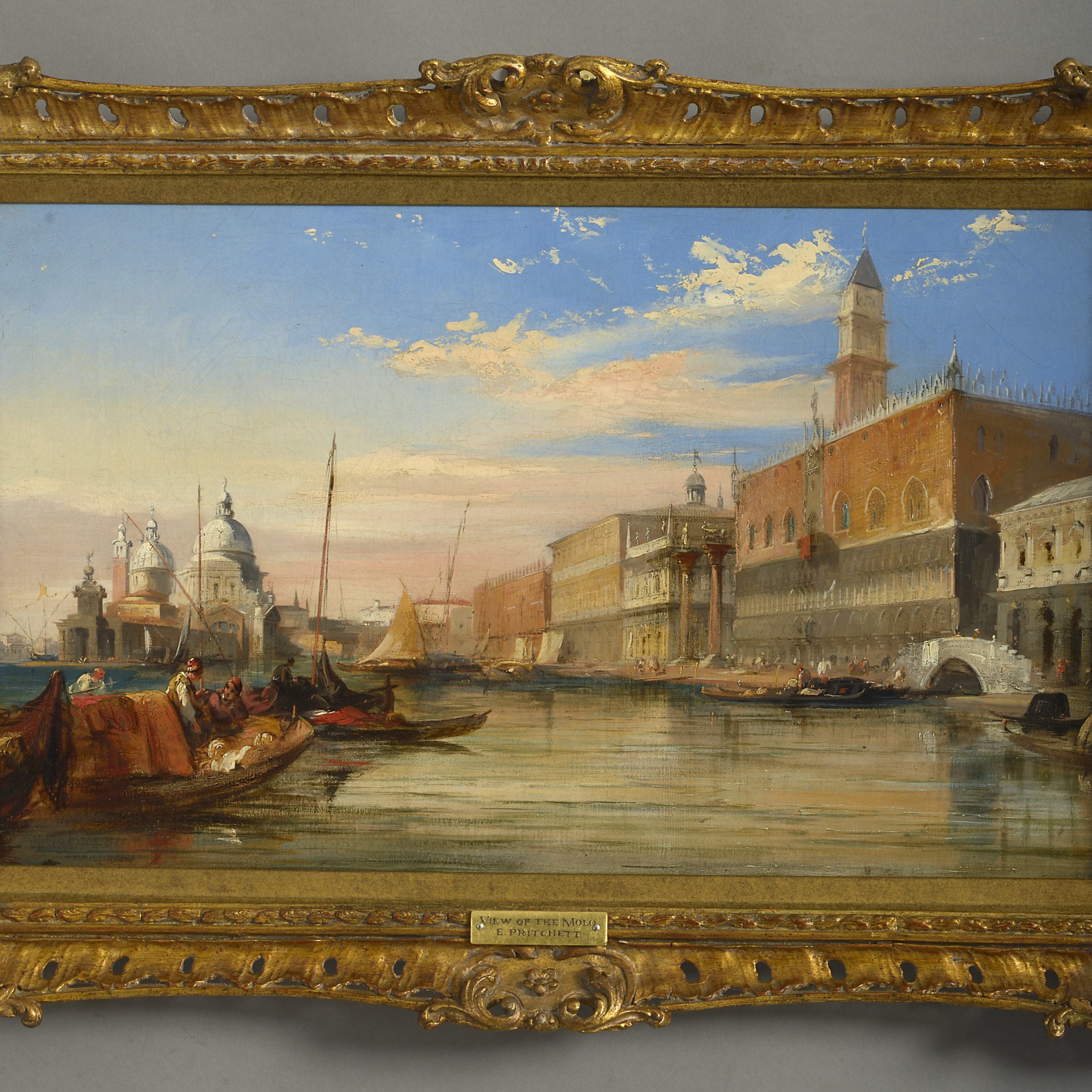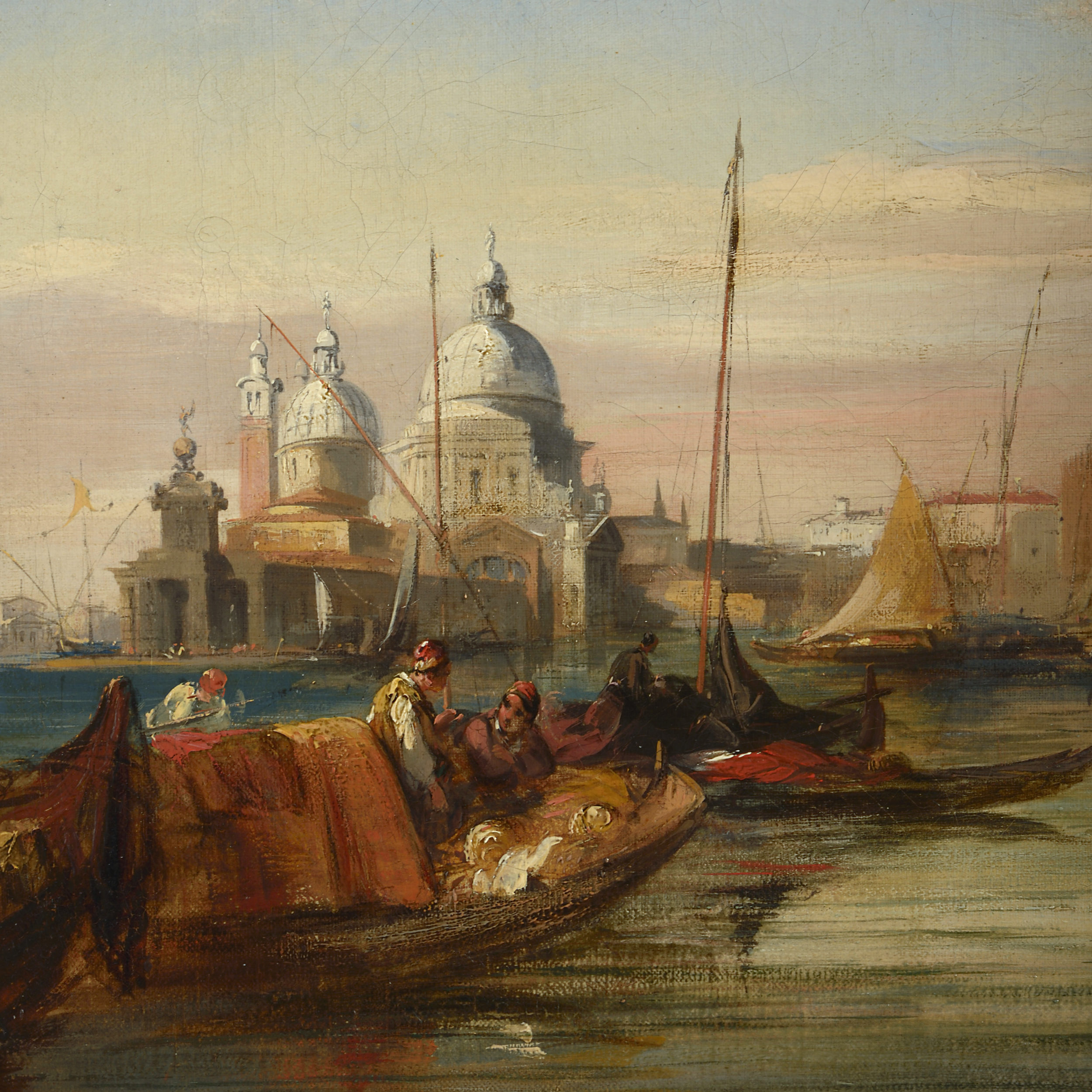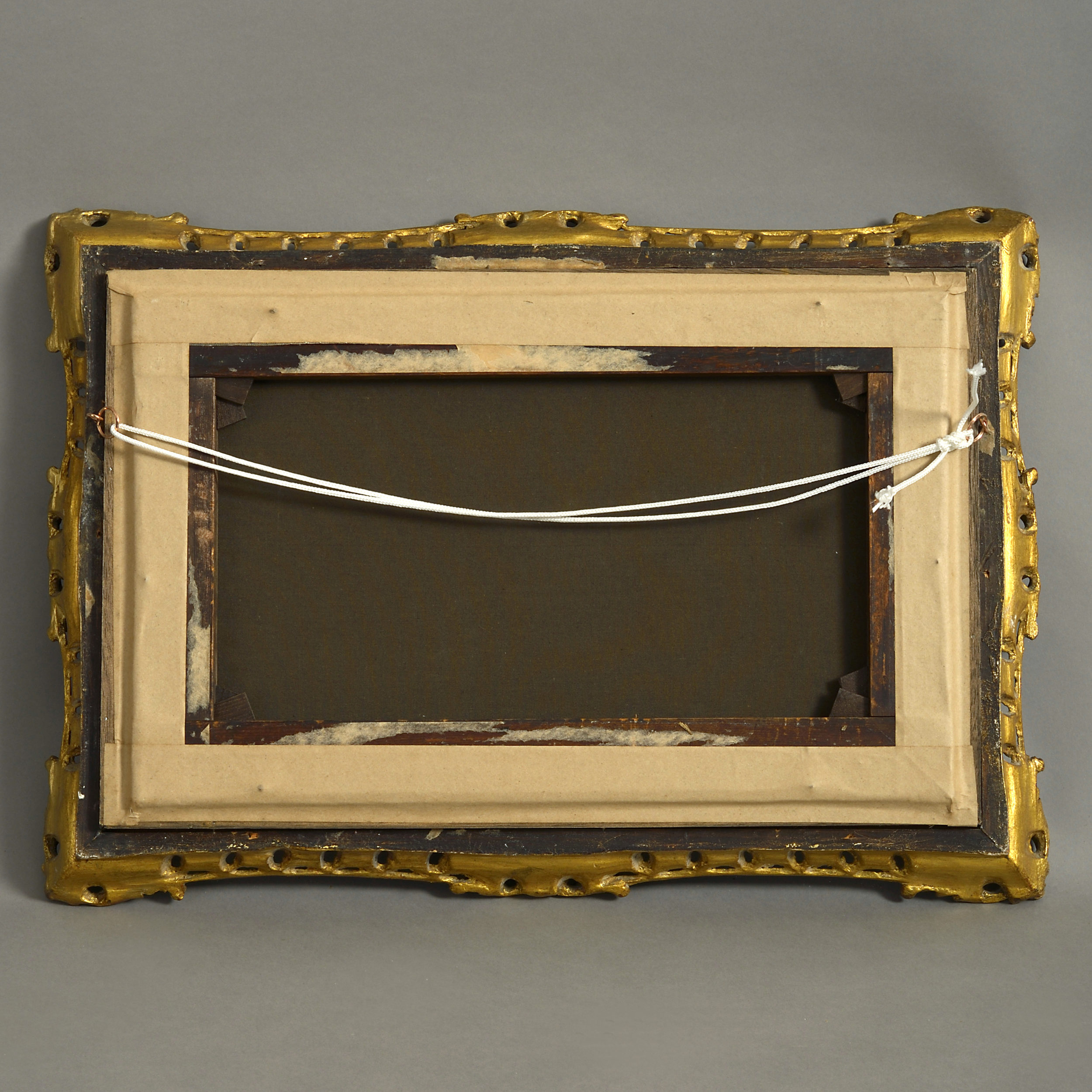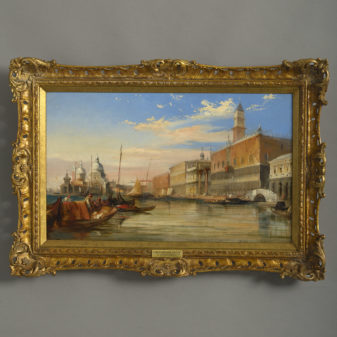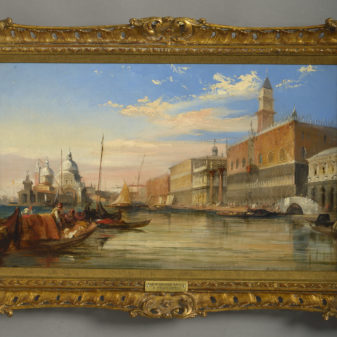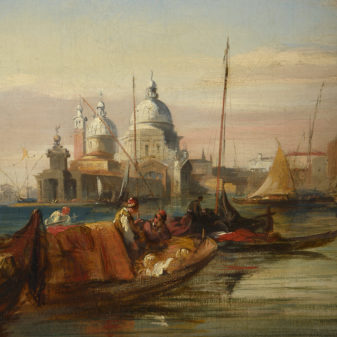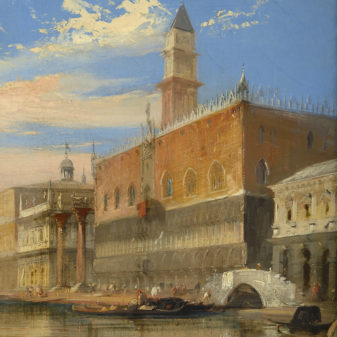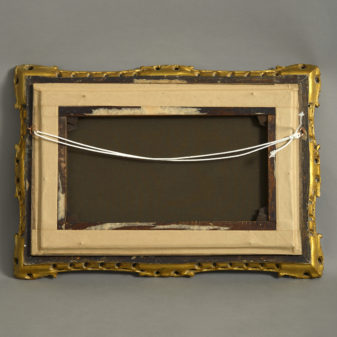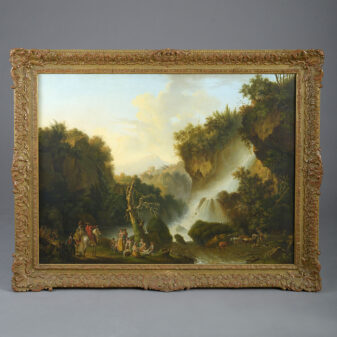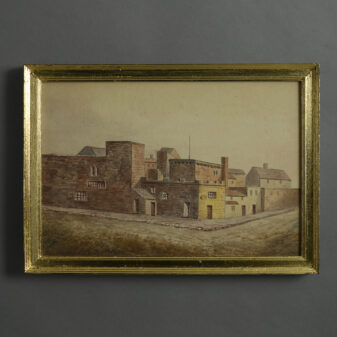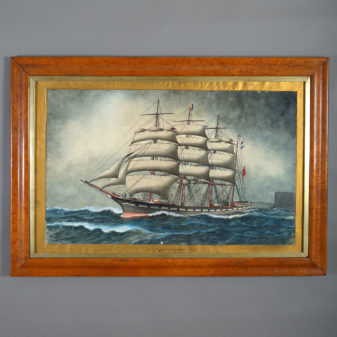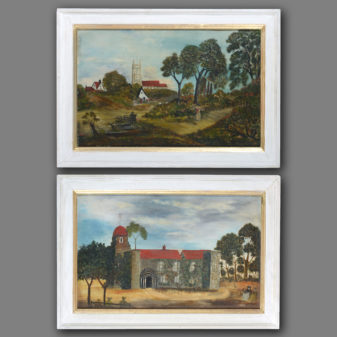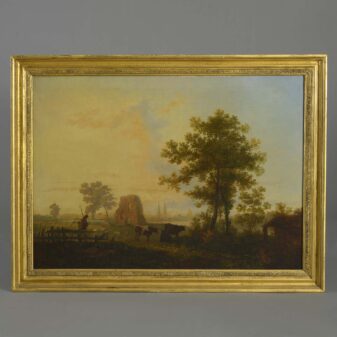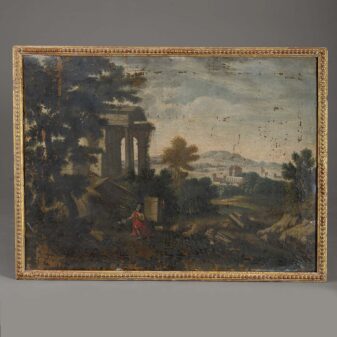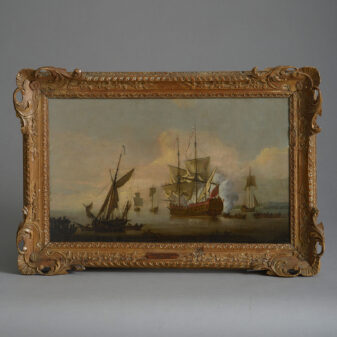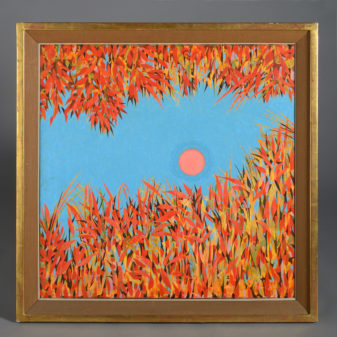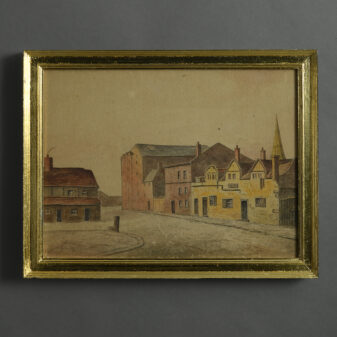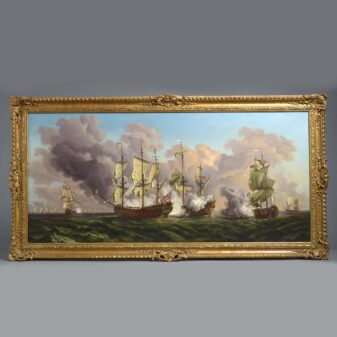Circa 1840 Italy
Edward Pritchett (Fl.1828-1864) – A Venetian Canal Scene
£7,500
SOLD
Height 16 1/4 inches (41 cm)
Width 23 1/4 inches (59.25 cm)
Depth 2 inches (5 cm)
Edward Pritchett (Fl.1828-1864)
Venice: A view of the Molo with Doges Palace and the church of Santa Maria della Salute beyond.
Oil on canvas; held in a decorative gilt frame.
Provenance: Christies, Victorian Pictures, 26th November, 2002, lot 169; thence by descent in a private collection.
Little is known about Edward Pritchett’s life, but over the course of his nearly forty year career, he painted innumerable Venetian cityscapes and exhibited widely at the Royal Academy between 1828 and 1864 and at the British Institution. For many nineteenth-century painters, like Pritchett, Italy, and primarily Venice, was the ultimate destination of the Grand Tour, and Victorian artists were taught to venerate this city above all.
Pritchett developed a deep knowledge of Venice, which allowed him to recreate it so vividly. Far from being merely topographical, his paintings capture the essence of the picturesque city, with its crumbling stonework, vivacious locals, and bustle of commerce. The present work depicts fishermen and merchants going about their daily business at the entrance to the Grand Canal. Amidst the fast pace of this commercial hub, the architectural splendour appears timeless. This sun-lit view also depicts on the left the Dogana di Mare, or Sea Customs Post, before the radiant domes of Santa Maria della Salute. On the right at the water entrance to the piazzetta is the Molo, a broad stone quay that was once the ceremonial landing spot for great officials and distinguished visitors. This “front door” to Venice is marked by two massive granite columns brought from the Orient in the 12th century; one supports the winged lion of St.Mark supporting a book and the other St. Theodore, Venice’s first patron.
On the right-hand side of the Molo is the Doges Palace, whose crenellated mass appears to float upon the waters of the lagoon. Its style incorporates three great architectural traditions—Gothic, Moorish, and Renaissance. Erected over many years after the burning of the original 9th-century structure in 976, most of the building dates from the 14th to the 16th century. The palace was the core of political life in Venice—not only the residence of the elected Doge but also the meeting place of the republic’s governing councils and ministries. Its chambers and staircases were richly decorated by a succession of Venetian painters and craftsmen. Soaring high above and behind this is the Campanile – the bell tower of St Mark’s Basilica and one of the most recognisable symbols of the city for centuries.
Pritchett’s style in these smaller scale, evocative Venetian works, is full of character and almost impressionistic in handling. Architectural details seem to be suggested and then softened to create almost shimmering indications of mass and form. Undoubtedly he must have been influenced by some of the great Italian views of William Turner whom he would have encountered at the R.A. particularly his various scenes of Venice and other large masterpieces such as “Modern Rome – Campo Vaccino” 1839.

